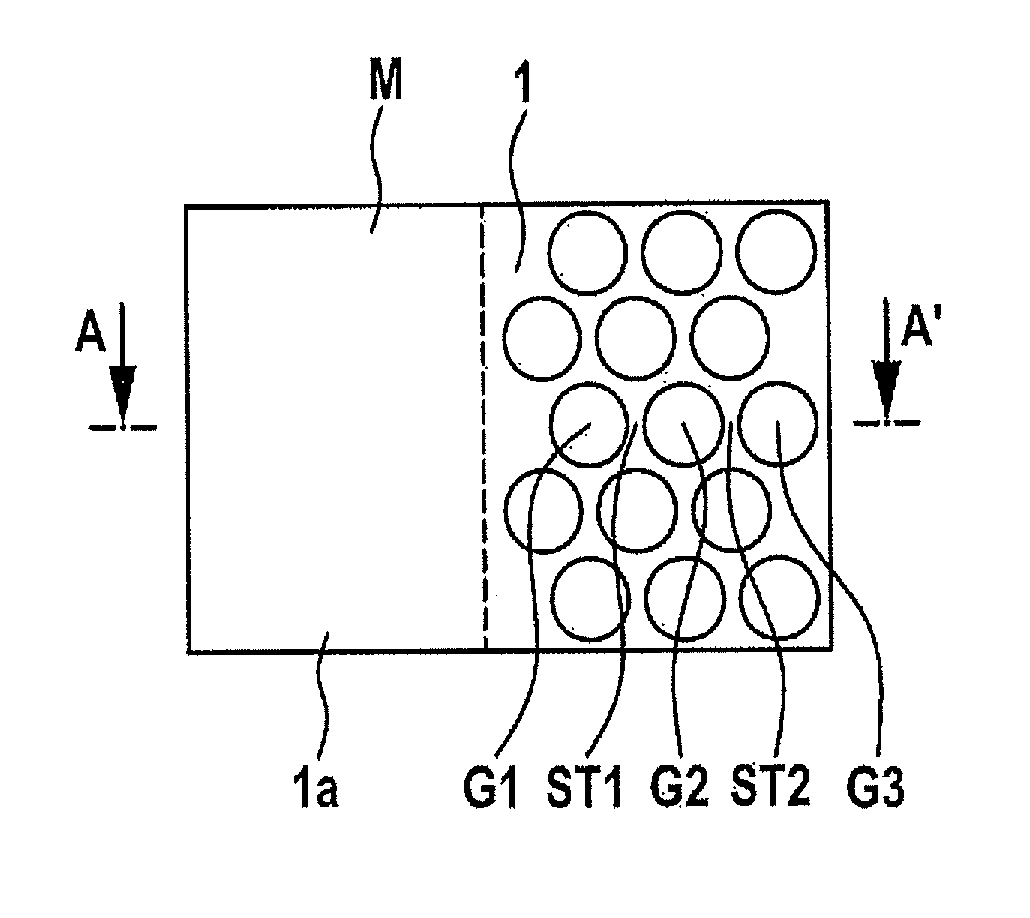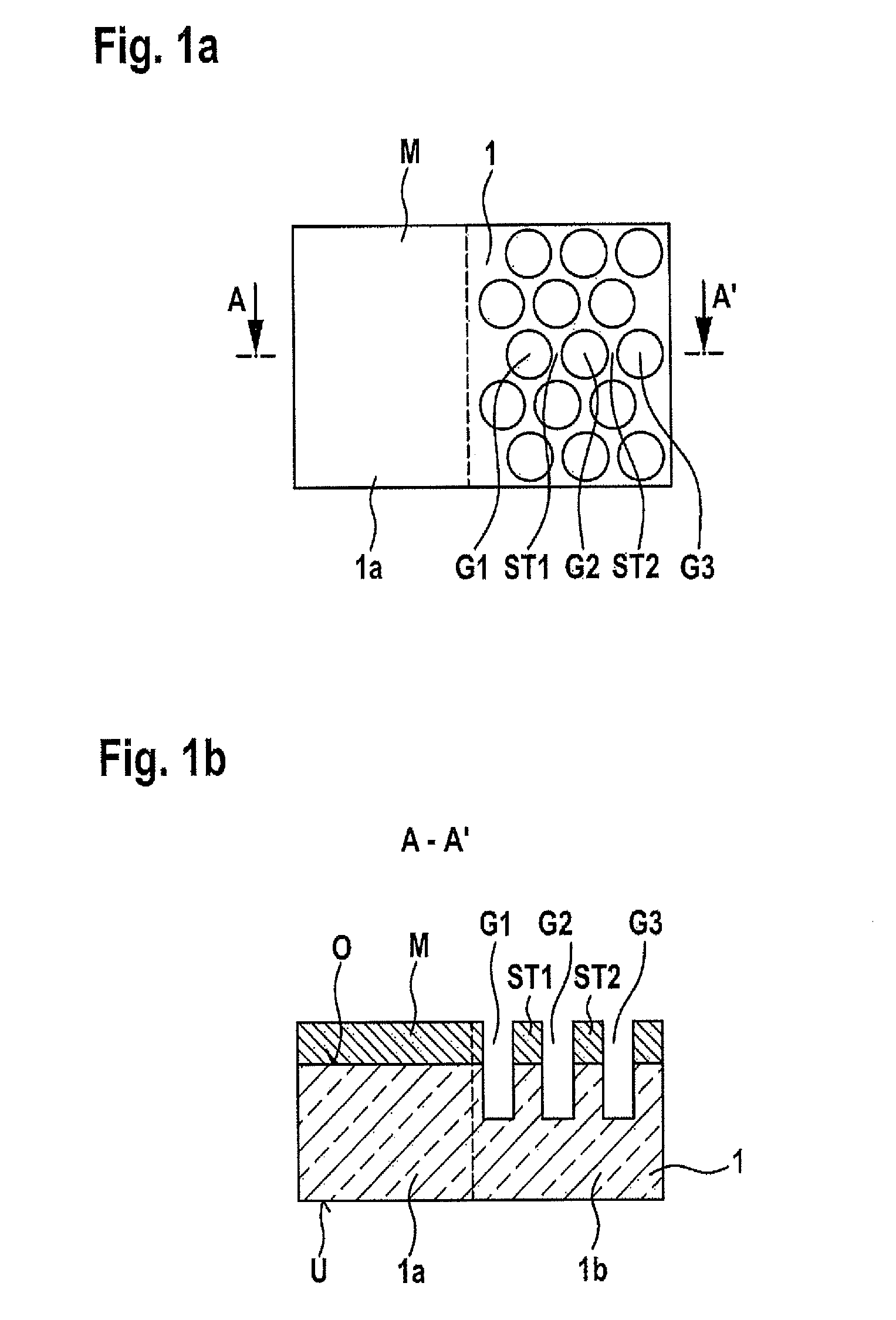Micromechanical structure and coresponding manufacturing method
- Summary
- Abstract
- Description
- Claims
- Application Information
AI Technical Summary
Benefits of technology
Problems solved by technology
Method used
Image
Examples
Embodiment Construction
[0026]In the Figures, identical reference characters designate identical or functionally identical elements.
[0027]FIGS. 1a), b) and FIGS. 2a), b) are schematic representations of a micromechanical structure according to a first specific embodiment of the present invention, FIGS. 1a) and 2a) in a top view and FIGS. 1b) and 2b) in vertical cross-section along line A-A′ in FIG. 1a) or, respectively, 2a).
[0028]In FIGS. 1a), b), reference character 1 designates a silicon substrate having an upper side O and a lower side U on which there is deposited an etching mask M, e.g. of silicon nitride, as trench etching mask. Using a known trench etching process, through the presence of corresponding holes in etching mask M holes G1, G2, G3, etc., with web regions ST1, ST2, etc. positioned between them, are etched in a region 1b of the silicon substrate, the holes structuring region 1b to form a network-type substrate region made of silicon. Etching mask M is sealed in region 1a of the silicon sub...
PUM
 Login to View More
Login to View More Abstract
Description
Claims
Application Information
 Login to View More
Login to View More - R&D
- Intellectual Property
- Life Sciences
- Materials
- Tech Scout
- Unparalleled Data Quality
- Higher Quality Content
- 60% Fewer Hallucinations
Browse by: Latest US Patents, China's latest patents, Technical Efficacy Thesaurus, Application Domain, Technology Topic, Popular Technical Reports.
© 2025 PatSnap. All rights reserved.Legal|Privacy policy|Modern Slavery Act Transparency Statement|Sitemap|About US| Contact US: help@patsnap.com



